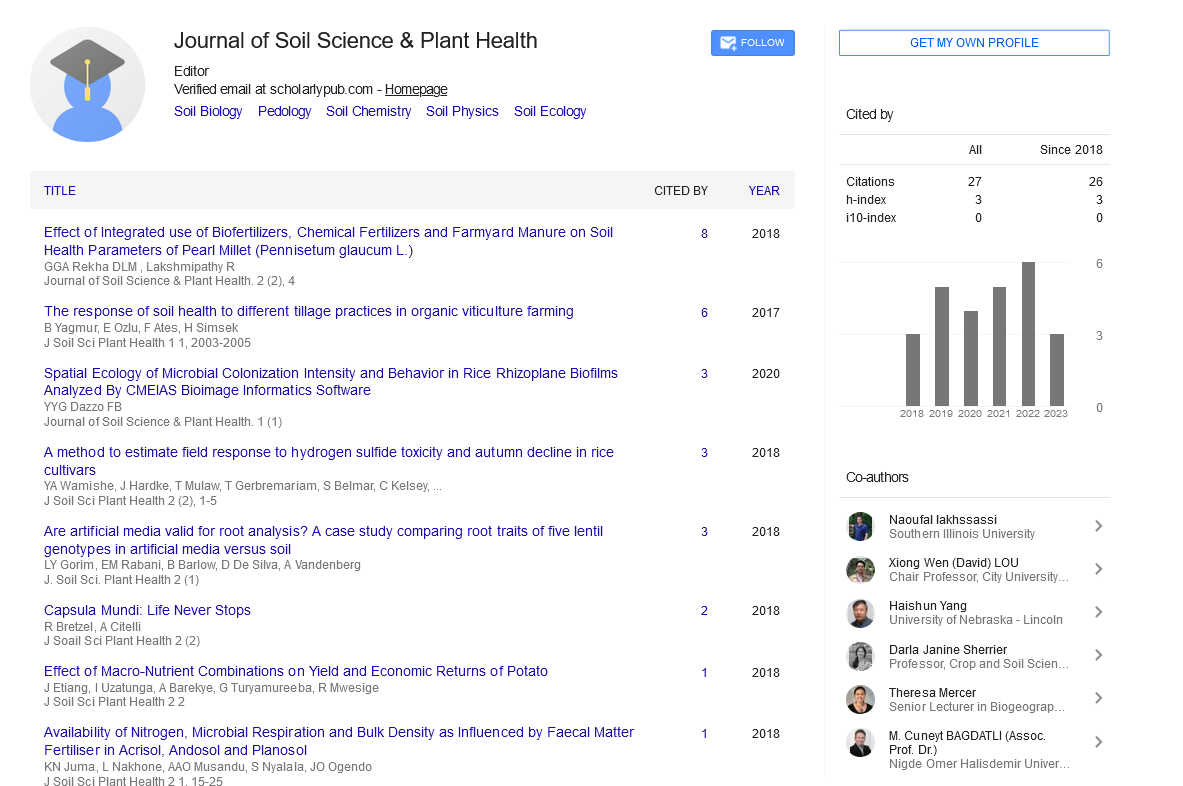Opinion Article, Vol: 7 Issue: 1
Treatments of Biofouling with Biocides
Maduka M*
1Department Of Mechanical And Industrial Engineering, University Of Massachusetts, Amherst, USA
*Corresponding Author: Maduka M
Department Of Mechanical And Industrial
Engineering, University Of Massachusetts, Amherst, USA
E-mail: alison.bates@colby.edu
Received date: 28 January, 2023, Manuscript No. JSPH-23-92782;
Editor assigned date: 30 January, 2023; PreQC No. JSPH-23-92782 (PQ);
Reviewed date: 14 February, 2023; QC No. JSPH-23-92782;
Revised date: 21 February, 2023; Manuscript No. JSPH-23-92782 (R);
Published date: 28 February, 2023, DOI:10.4172/jsph.10000174
Citation: Maduka M (2023) Treatments of Biofouling with Biocides. J Soil Sci Plant Nutr 7:1.
Abstract
Biofouling is the accumulation and growth of microorganisms, plants, and animals on surfaces that are in contact with water. It can occur in a variety of settings, including ship hulls, water intake systems, pipelines, and water treatment plants. Biofouling can lead to a range of problems, such as decreased water flow, increased energy consumption, and corrosion.
Description
Biofouling is the accumulation and growth of microorganisms, plants, and animals on surfaces that are in contact with water. It can occur in a variety of settings, including ship hulls, water intake systems, pipelines, and water treatment plants. Biofouling can lead to a range of problems, such as decreased water flow, increased energy consumption, and corrosion.
One way to control biofouling is through the use of biocides, which are chemicals that kill or inhibit the growth of micro-organisms. Biocides can be effective in controlling biofouling, but they can also have negative impacts on the environment and human health if not used properly.
Some common treatments of biofouling using biocides
Chlorination: Chlorine is a commonly used biocide that is effective against a wide range of microorganisms. Chlorination is often used in water treatment plants and cooling water systems to control biofouling. However, chlorine can be corrosive and can form harmful byproducts if not used properly. Copper-based biocides: Copper is a natural biocide that can be effective against a range of organisms. Copper-based biocides are commonly used in marine settings, such as ship hulls and underwater structures. However, copper can also accumulate in the environment and harm aquatic life.
Organotin compounds: Organotin compounds are powerful biocides that are effective against a wide range of organisms. They have been used in antifouling paints on ships for many years. However, organotin compounds are highly toxic and persistent in the environment, and have been banned in many countries.
Quaternary ammonium compounds: Quaternary ammonium compounds, or "quats," are a type of biocide that are commonly used in disinfectants and cleaning products. They can be effective against biofilms, which are communities of microorganisms that are particularly resistant to biocides. However, quats can also be toxic to aquatic life. It is important to note that the use of biocides for biofouling control should always be carefully managed and monitored to minimize their impact on the environment and human health.
Alternatives to biocides, such as physical cleaning and non-toxic coatings, should also be considered. Biofouling is the accumulation of microorganisms, plants, animals, or organic and inorganic substances on the surface of structures submerged in water. It can occur on a wide range of surfaces, including ships' hulls, pipelines, buoys, and aquaculture equipment. Biofouling can have a range of negative effects, including reduced operational efficiency, increased fuel consumption, increased maintenance costs, and potential damage to structures. It can also increase the risk of spreading invasive species, and be transported to new locations.
Preventing and managing biofouling is important for maintaining the performance and longevity of submerged structures, as well as for protecting the environment. Strategies for preventing biofouling include using anti-fouling coatings, physical barriers, and regular cleaning and maintenance. Biocides are chemical substances or microorganisms that are used to control or kill harmful organisms such as bacteria, viruses, fungi, algae, and other microorganisms. Biocides are commonly used in various applications, such as disinfection, preservation, and pest control. Examples of biocides include disinfectants, such as chlorine and hydrogen peroxide, preservatives, such as formaldehyde and phenols, and insecticides, such as pyrethroids and organophosphates. Biocides are used in a wide range of industries, including agriculture, food processing, healthcare, and water treatment.
 Spanish
Spanish  Chinese
Chinese  Russian
Russian  German
German  French
French  Japanese
Japanese  Portuguese
Portuguese  Hindi
Hindi 